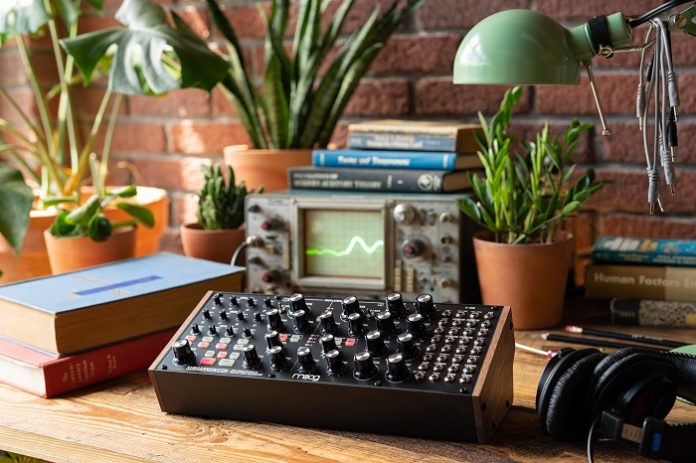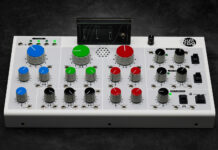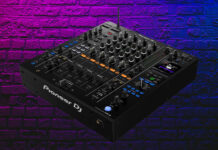Moog Music’s new semi-modular analog polyrhythmic synthesizer, Subharmonicon, is now available worldwide. Moog details the historical inspiration behind this unique instrument and presents “Music As Living Matter,” a short film scored by Suzanne Ciani using Subharmonicon.
The Moog Subharmonicon is a versatile analog labyrinth of subharmonically derived synthesis and polyrhythmic patterns, equally suited for losing oneself and simultaneously finding oneself through sound.
This new semi-modular analog synthesizer is designed for the exploration of sequences that unfold and evolve over time, spiraling through six-tone subharmonic chords and organic polyrhythms.
The newest addition to Moog‘s family of semi-modular analog synthesizers (Matriarch, Grandmother, Mother-32, and DFAM), Subharmonicon is capable of complex sounds and patterns, yet is incredibly simple to use. With two VCOs, four Subharmonic Oscillators, two 4-Step Sequencers, and four Rhythm Generators, this new musical machine creates a rich harmonic kaleidoscope that divides into itself until everything that is up becomes down.
Although no patching is required to start creating, Subharmonicon can be patched into itself, expanding its onboard capabilities, or interfaced with Mother-32, DFAM, and other external Eurorack-compatible gear for endless possibilities.
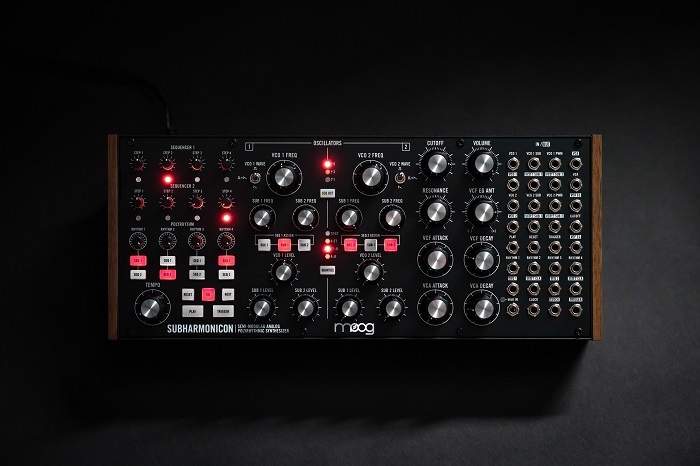
Deeper Understandings (The Past Informs the Future)
To design Subharmonicon, Moog drew inspiration from radical theories on music composition that arose in experimental circles during the 1930s and 1940s. Subharmonicon is inspired by Joseph Schillinger‘s mathematical systems for musical composition and is influenced by two analog innovations from the 1930s and 1940s: the Mixtur-Trautonium, which employed a series of subharmonic oscillators to generate electronic undertones, and the Rhythmicon (developed by Leon Theremin, the inventor of the Theremin), an instrument capable of sounding multiple harmonically related polyrhythm generators simultaneously.
Learn more about these historical instruments and how the past continues to inform the future of sound here.
“A long time ago, when I was in college and first met Bob [Moog], the Rhythmicon came up a couple of times,” recalls Steve Dunnington, Senior Hardware Lead at Moog Music.
“One of his other students was into Schillinger…and I’ve always been fascinated by patterns that repeat differently each time…and that’s a thing you can explore [with Subharmonicon].
This instrument was inspired by some of the ideas and musical concepts of Schillinger, such as the idea that by taking a set of pitches and superimposing them on a set of rhythms with a different length will generate rotating musical motives.”
Under Dunnington’s direction, a small group of synth enthusiasts had the chance to discover Subharmonicon‘s unique sounds and concepts back in 2018 when an early version of the instrument was first introduced as part of that year’s Moogfest Engineering Workshop. It’s been in high demand ever since, and the instrument is now shipping to authorized Moog dealers worldwide.
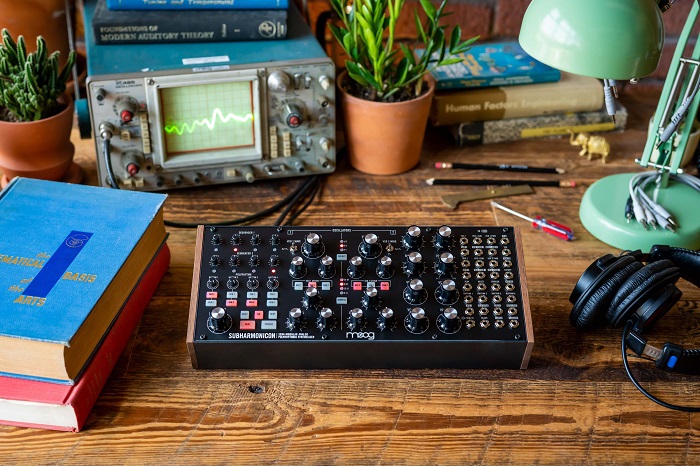
“Music As Living Matter”
Moog Music presents “Music As Living Matter,” a short film conceptualized to explore and examine conventional ideas of music, sound, and expression. Electronic music pioneer Suzanne Ciani and multidisciplinary visual artist Scott Kiernan invite you to reimagine these ideas through a delicate balance of mystery and order in this experimental piece composed entirely using Subharmonicon and analog video synthesis techniques.
“What I love about this instrument is that it gives you a more organic and fluid beat pattern that is off the grid. It is intuitive and yet full of surprises. Schillinger gives us a very fundamental concept of what music is to a human being that I connect with: art is a piece of life itself that we make to reflect our experience.” – Suzanne Ciani
The film’s visuals and narration offer a deeper understanding of the instrument, drawing inspiration from the language and illustrations found in Bob Moog‘s old copy of Joseph Schillinger‘s book “The Mathematical Basis of the Arts.” Engage your imagination as the rhythmic ping-ponging of Ciani’s score meets Kiernan‘s depiction of the evolving shapes, forms, and textures Subharmonicon‘s sound creates.
Watch the video below.











